Cameras offer picture of winter on open spaces
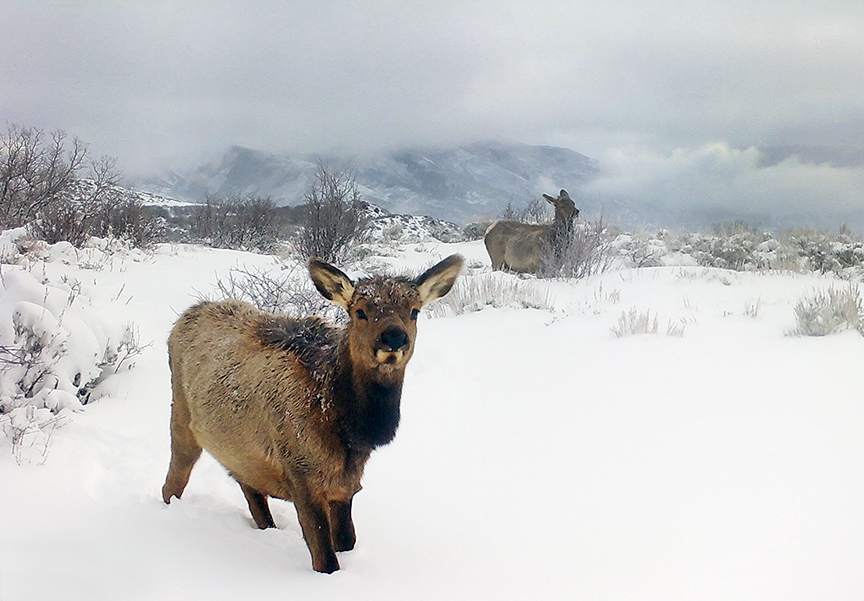
Elk at Sky Mountain Park in December 2022.
Sometimes a swath of tracks through deep snow offers the only hint that a herd of elk was on the move in the darkness. Those paths, where each animal followed the same broken line of snow to minimize their effort, are a common sight on winter mornings in the Roaring Fork Valley. But it’s what happens in the trees, where the tracks disappear onto the hillside, that tells the rest of the story.
More than half of Pitkin County’s open space acreage is closed to human use for all or some part of the year, largely to protect wildlife. Many of these closures begin in December, when the snow gets deep, the nights turn frigid and the food for ungulates (elk, deer, moose and bighorn sheep) gets scarce.
During these long stretches of human absence, Open Space and Trails employs an array of motion-triggered wildlife cameras to help document wildlife activity. The cameras also allow Open Space and Trails to patrol closed areas without disturbing the animals we’re trying to protect.
Scenes that would be impossible to see without the cameras confirm the importance of the closures through the harshest months of the year. We see images of elk moving through snow with their tongues hanging out (presumably a sign of the effort involved) or digging down for mouthfuls of dead grass and reaching into tree branches for sustenance. And occasionally, we see images that can’t help but elicit a smile, like a series of photos of magpies gathering around an elk that had bedded down in the snow. The birds appeared to pick insects from the elk’s coat. The elk, a female, remained at rest for about five hours on Cozyline Trail at Sky Mountain Park.
There is also the occasional photo of an elk that is so ragged and thin by spring, we have to wonder if it survived.
While it’s not possible to tally the number of animals on open spaces with cameras, since an animal might never venture past a camera, or might pass by regularly, Open Space and Trails tallies the number and variety of wildlife it does see on a select number of cameras. A herd of 72 elk passing by a newly placed camera this fall at Sky Mountain Park speaks to the Park’s importance as a piece of the broader winter range for elk in the area, but deer, bears, weasels, martens, foxes, coyotes, bobcats, mountain lions and rabbits also pop up on the Park’s trail cameras. We’ve yet to see a moose trigger a camera there, but it’s likely only a matter of time.
Similarly, herds of elk wander up and down the hillside at closed Glassier Open Space in the winter. We tallied a group of about 60 last January. Deer, bears, turkeys, raccoons, bobcats, mountain lions, coyotes, foxes, marmots, rabbits, squirrels and a badger have all been captured on Glassier cameras.
The cameras also help OST confirm that winter closures are properly timed. The snow may recede by April, but the animals that depend on open spaces haven’t disappeared. Ungulates feed on the newly greening grass as they try to recover from winter’s starvation diet. Some winter closures extend into May, allowing them to do so without the stress of human intrusions.
Spring brings one of the Open Space department’s favorite tasks – combing through images for the wondrous scenes that play out on our open spaces while we’re not there.
Below, we’re sharing a few glimpses from last winter on Pitkin County open spaces.
– By Pitkin County Open Space and Trails
KEY LINKS
Managing Sky Mountain Park for many users (May 2023)
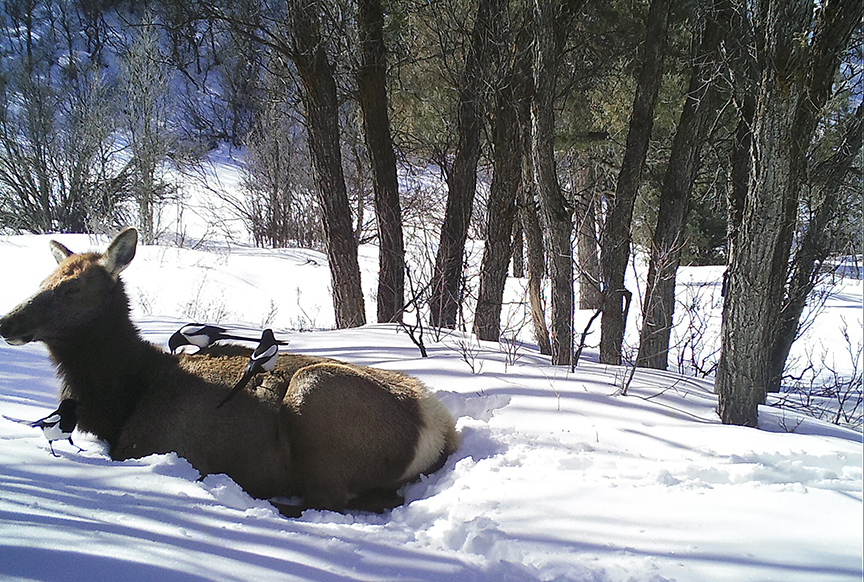
A cow elk at rest attracts a flock of magpies.
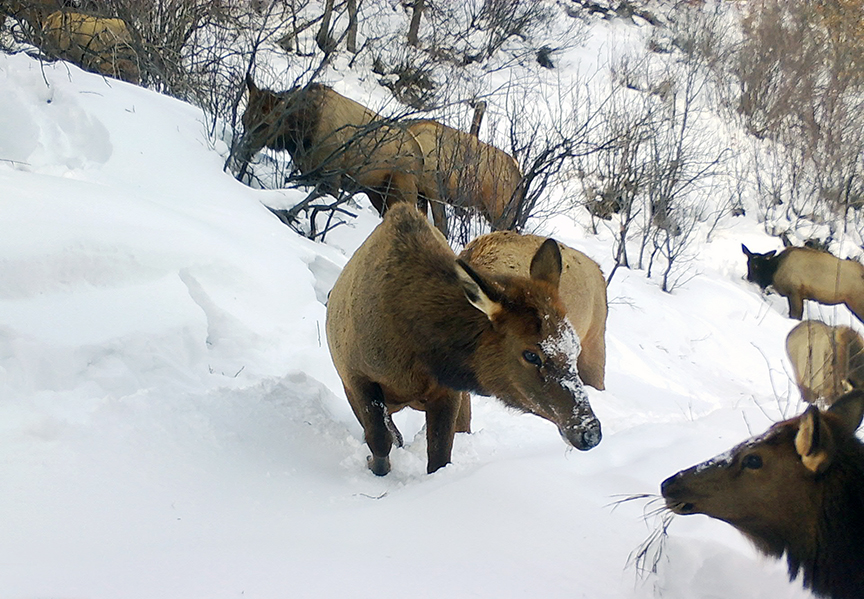
Elk dig for sustenance on open space.
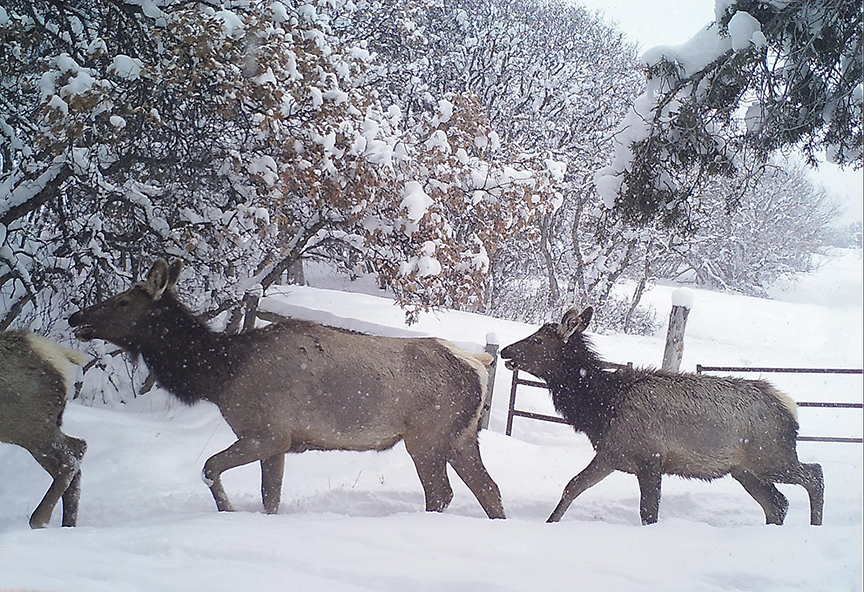
An elk herd trudges through the snow at Glassier Open Space.
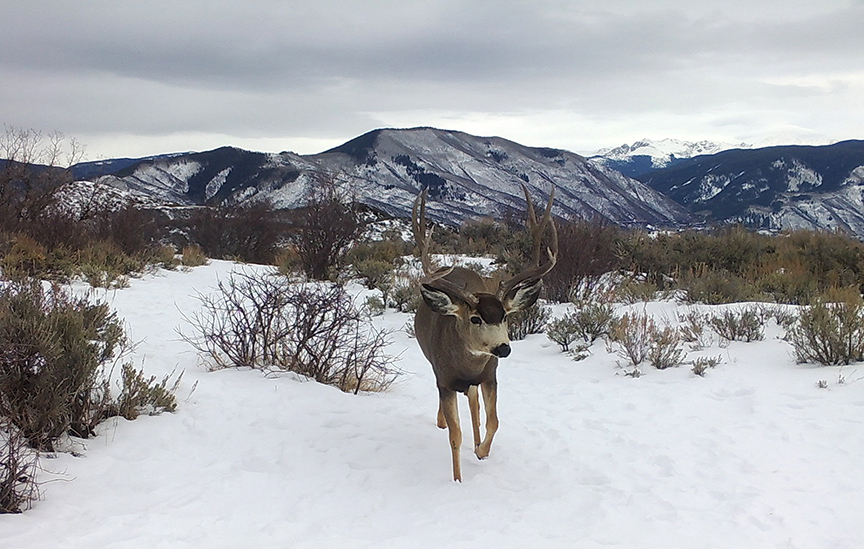
A mule deer buck caught on camera.
